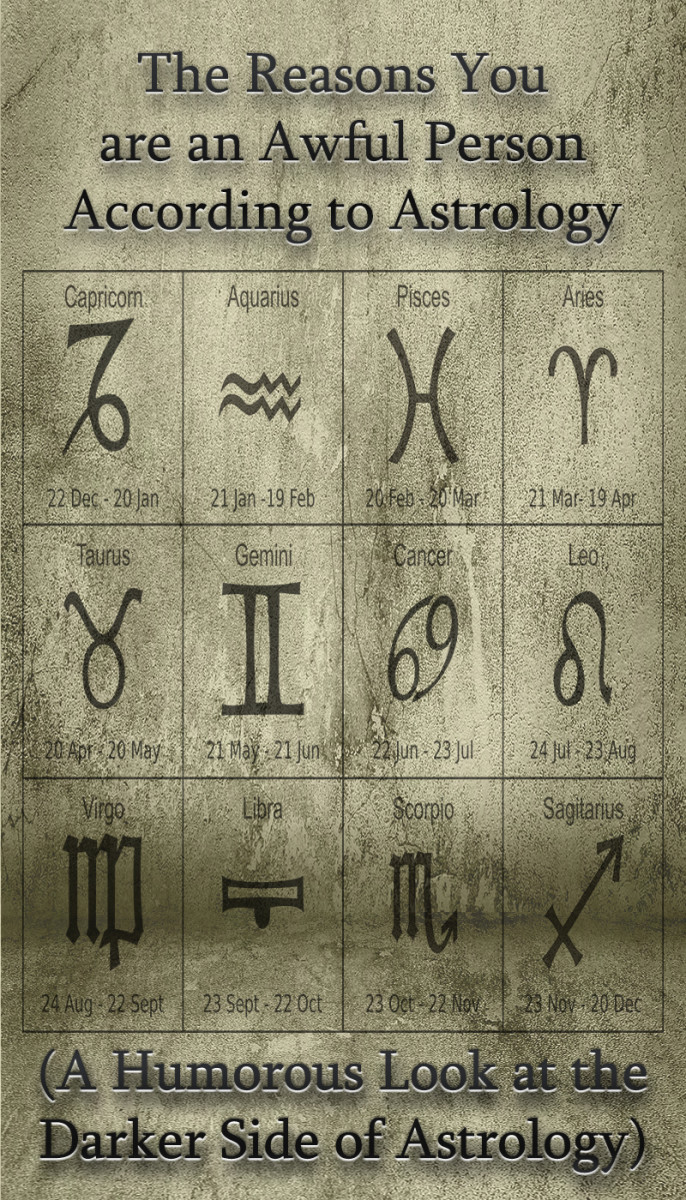- HubPages»
- Books, Literature, and Writing»
- Commercial & Creative Writing»
- Creative Writing»
- Humor Writing
Statistically speaking; it's bollox
You can prove anything with statistics. Governments do it all the time as do large corporations. Always the purpose is the same; to sell us something. Sometimes it is a product we don’t really need or shouldn’t touch with a barge pole and at other times it will be an idea that is otherwise repugnant to us. But there seems to be nothing quite like a good statistic to lend some instant credibility to your cause.
We’ve all heard the adverts for Dettol that claim the product kills 99.9% of household germs. It sounds pretty amazing especially for the germophobes out there, but where do they get that figure from? Has anybody ever asked them? Probably not. There will have been some kind of testing, to back it up, but just how accurate the claim is; well the proof of the pudding is in the eating although if you take Dettol internally it might eat the lining out of your stomach. I guess the answer to that one is really, “Who knows and who cares?” because in reality most of us probably have an adequately robust immune system and don’t need to avoid every single household germ or live our lives like the boy in the bubble.
Don’t get me wrong; I’m sure Dettol is quite an effective disinfectant albeit not the caped crusader against germs it is billed as by its ad agency. But I’ll bet their tagline has done wonders for their sales to the compulsive hand washers and (ironically) the great unwashed.
Then there are those adverts that say things like, “Nine out of ten dentists recommend brushing (insert your favourite toothpaste brand here)”. Once again it sounds pretty convincing, but this one is even dodgier than the Dettol claim because for the script to be true, all you have to do is find nine out of a sample of ten dentists to agree. Nobody said it was nine out of EVERY ten. There might only be nine dentists in the entire world that think this frothy gloop is any good. But to the dim-witted and the easily impressed it sounds damned convincing. Kerchang.
Of course the politicians are past masters in the art of befuddlement by statistics. One old chestnut that has been dropping its spiny little nuts all over us for years is the so-called official unemployment figures.
If you ask most people how these are arrived at they would probably assume it was from statistics supplied from WINZ. If that was the case the figures might be somewhere near accurate, always allowing for a few fundamental stuff ups by a few fundamental idiots tasked with compiling them.
However that is not how the figure is arrived at. Instead it comes from the charmingly titled Household Labour Force Survey, which is an impressive sort of name for a load of bollox. The HLFS (see how I got all Govt Department speaky there?) is a market research survey sampling 1000 households nationwide. It is what goes on in the lives of these 1000 households that is then extrapolated into the figures using the usual statistical bullshit models (guesses). Quite apart from the inherent dangers of extrapolation, which assumes a certain amount of consistency of the sample results to flow into the wider population, there is the simple possibility that some of the respondents might not give accurate answers. It’s not like anyone can check on them.
But it’s a great way to show that unemployment is either up or down depending on whether you are a Government showing off or an Opposition Party chucking rocks. But you have to pick a time when the sample can look good for you, of course.
Another good Government statistical trick is to show us how much our average wage is. You will have noticed that our average wage continues to rise but somehow we never seem to get any wealthier, speaking as one of the 99%. That’s the 99% of Kiwis not the household germs, although some may argue that.
But back to the average wage. In reality it isn’t even good enough to be deemed average, but it looks not too bad on paper because it really is the average. However any schoolkid that actually finished school should know that averages can be wildly skewed by extremes at either end of the scale. Of course our average wage is going up steadily because the 1% who have been galloping along over the last year and who experienced (albeit on average) an 18% increase in their wealth. It’s basic mathematics really if you have five citizens and four of them earn $30K per annum and one earns $300K per annum; the average income is $84k which makes those four guys look more than twice as wealthy as they really are.
The only figure that makes any sense in this context is the mean national wage, which is of course very mean and nothing like the $45K or whatever they reckon it is these days.
But what inspired this blog this week was what I would have to call the most pathetic and frankly, pointless statistics I have ever had the bizarre experience of encountering. This is a little gem I came across via Granny Herald.
It is called The Alternative Medal Table and is compiled by some obviously overpaid and underemployed person or persons at Statistics New Zealand. Granny’s headline read, “Olympics: NZ third on alternate (sic) medal table”.
This is not only one of the lamest stories to ever appear in the venereal old slapper of a rag, but also deeply disturbing on a number of levels.
First of all somebody should send the subbie back to school where he or she can learn the difference between alternate and alternative. That’s if we still have any schools still teaching English grammar.
But grammatical horrors aside, you have to wonder why such a ‘story’ should ever see the light of day. It is about a table that the previously mentioned wastes of space at Statistics NZ have compiled to show that instead of lagging behind the rest of the world in medal tallies at the Oh Limp Pricks, (like anyone really cares?); we are actually doing very well in fact. They even have the statistics to prove it.
Two things immediately occur to me about this story:
(1) Are we so sad as to need something like this to make us feel bigger and tougher than we are? I fear it shows our national psyche in a very immature light. Maybe it’s another example of how far that PC wheel has swung. There can’t be any losers in the games because we might cry?
(2) Why do Statistics NZ staff have the time to waste on stuff like this?
But how do these clever public servants pull off this amazing feat of logic? Well it’s easy really. We only have a population of 4.4 million but (at the time of writing) we have just two medals. China, on the other hand with a population of 1.3 billion had 30 medals. This actually means we have an average of 0.46 of a medal each per million citizens, which I would of thought was fuck all by anyone’s standards and proves that we have very little to show so far. But it seems I am mistaken because China with its 30 medals only has some miniscule fraction of a medal per million citizens. Thus New Zealand sits at number 3 on the Alternative Medal Table below those other two giants of the Olympic Games, Qatar and Slovenia. On this cuckoo cloud table China languishes down at number 47. So there!
Now don’t you feel better, and wasn’t that a great use of your tax dollars?



